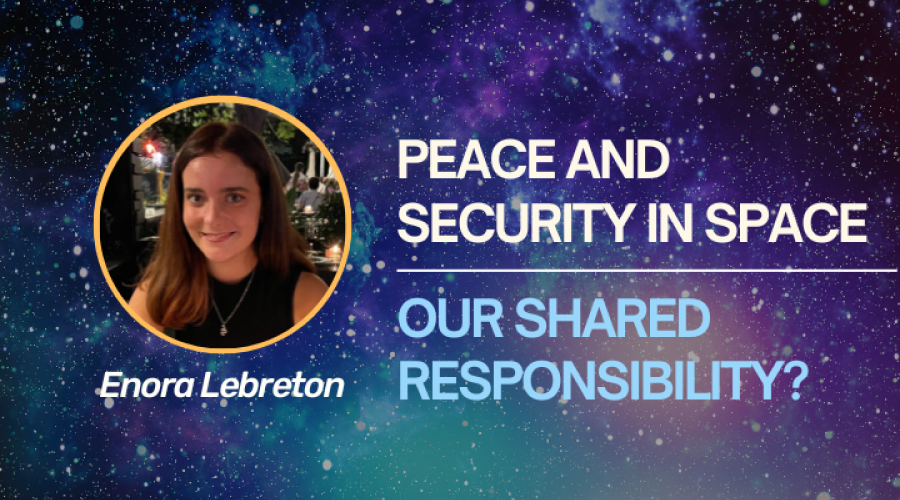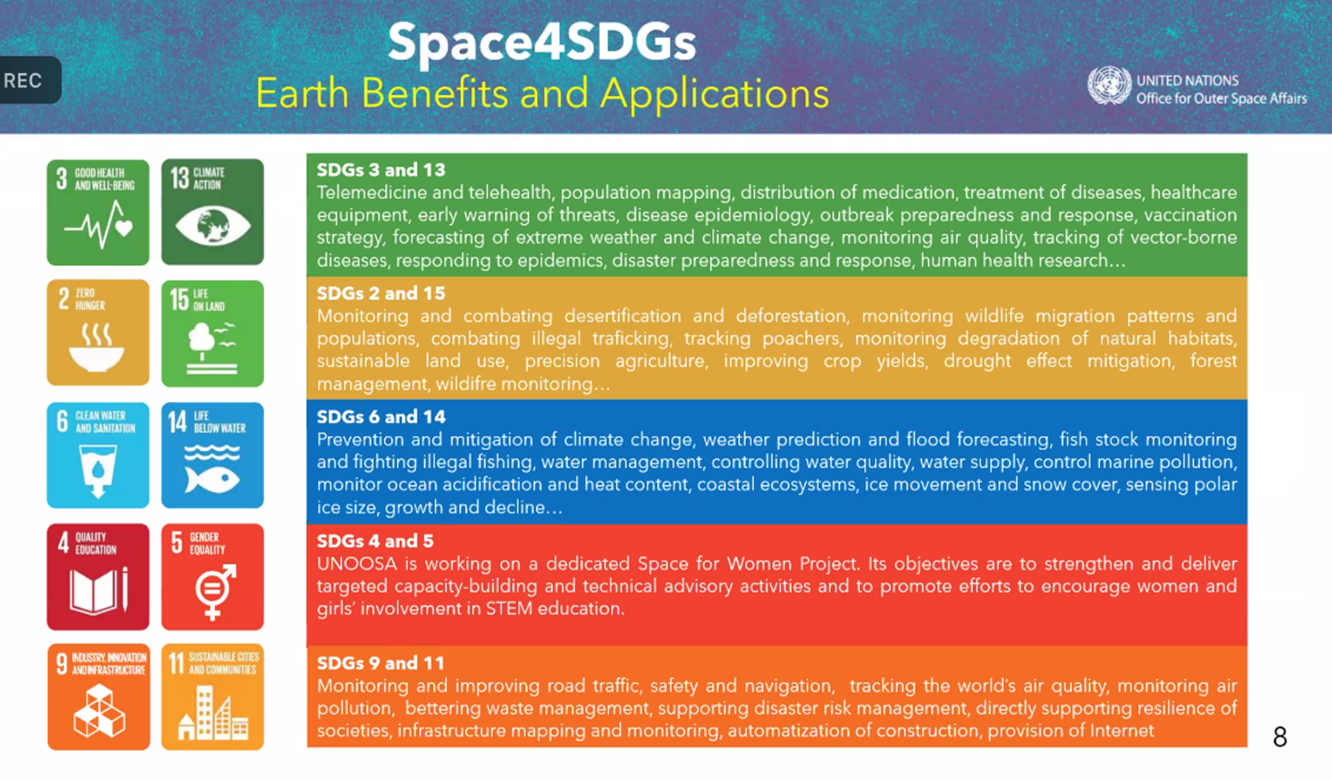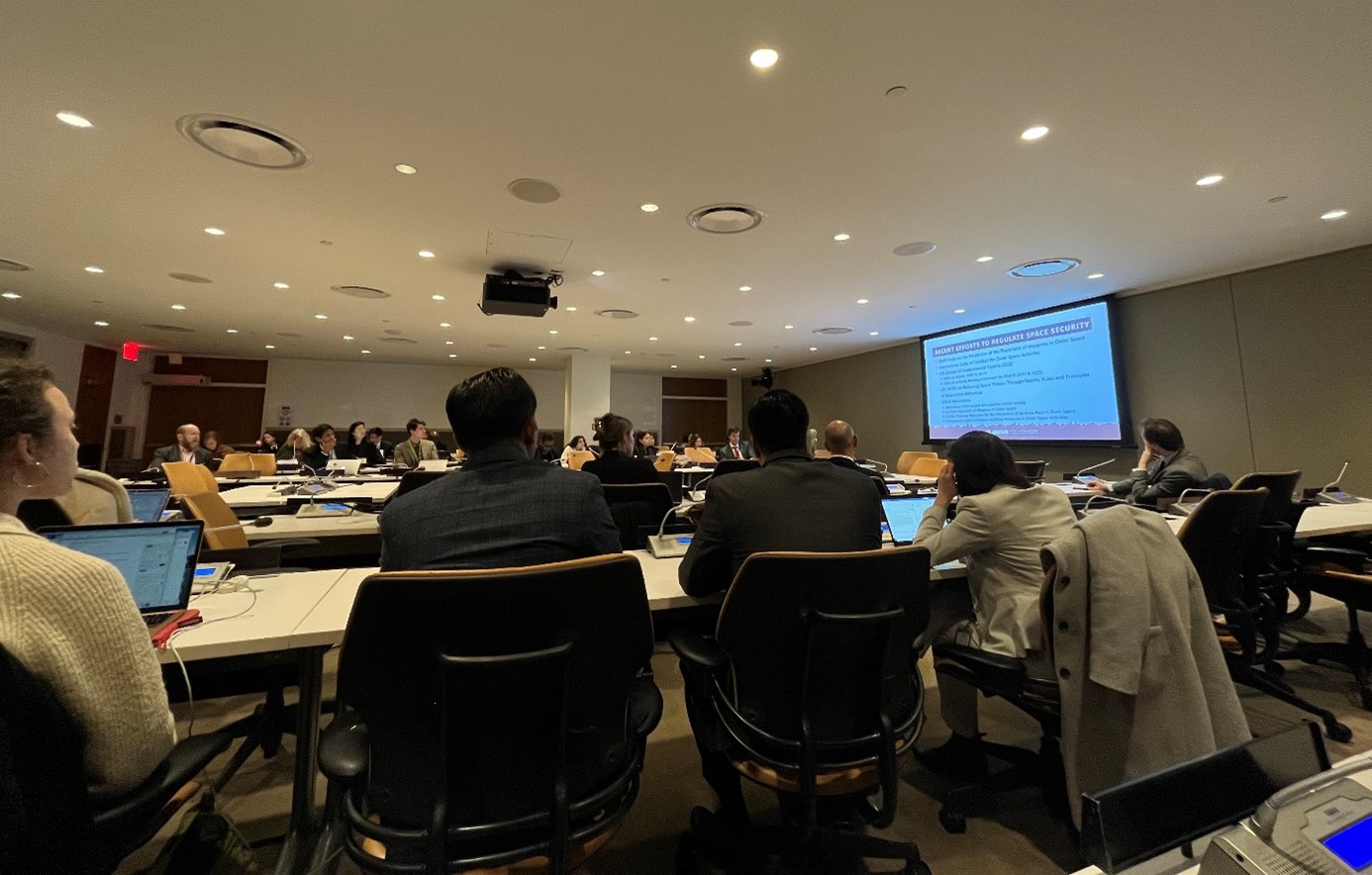
If you asked someone how their daily life depends on the use of outer space, they’d probably think long and hard, ultimately coming up with a thing or two (or none). Countries have long looked to outer space to demonstrate their technological and industrial competitiveness, but the arrival of new actors is making its future increasingly complex and uncertain. It is our generation’s responsibility to help define the principles that will maintain a peaceful, secure, and sustainable outer space.
In the run-up to the Summit of the Future in 2024, the United Nations Office for Disarmament Affairs (UNODA) and the United Nations Office for Outer Space Affairs (UNOOSA) held an online youth consultation on topics related to the peaceful uses of outer space. Four distinguished speakers—respectively from UNOOSA, the United Nations Institute for Disarmament Research (UNIDIR), Stockholm International Peace Research Institute (SIPRI) and Secure World Foundation (SWF)—shared their perspectives and raised various legitimate concerns. They all agreed that managing outer space will be one of the biggest multilateral challenges of the coming decades. Check out the #Youth4Disarmament news story to find out more about the youth consultation!

The way we access, explore and make use of outer space has evolved considerably since the 1967 Outer Space Treaty was adopted. Still, even today, the differing perceptions of States parties and signatories make dialogue difficult. Current priorities include space security management, climate change, privatization and militarization of outer space, delimitation of outer space, the status of space treaties, space debris, orbital congestion and many more.
On the last point of “orbital congestion”, since the destruction of the Feng Yun 1C weather satellite in 2007 and the announcement of the Starlink constellation in 2015, warnings have been multiplying around the proliferation of objects in outer space. The threat to future space exploration has prompted strong reactions, particularly since we could “compromise the ability of future generations to meet their needs” (World Commission on Environment and Development, 1987) as Ms. Beyza Unal (UNODA) stated during the youth consultation.
In that sense, the involvement of young people in discussions about tomorrow’s challenges has been very encouraging. The potential peaceful uses of outer space are countless, and our progress in deploying advanced orbital technologies transcends all expectations of a few decades ago. Satellites are now used to help observe the Earth and its oceans, anticipate changes in climate and precipitation, evaluate humidity, drought and pollution, understand hydrological cycles, perform geolocation, support telecommunications, organize cities, and detect infectious disease outbreaks—and that is only the tip of the iceberg. Space can contribute to mitigating climate change and help combat resource depletion. Space has thus become a strategic focus for achieving the Sustainable Development Goals (SDGs), as Mr. Markus Woltran (UNOOSA) recalled at the youth discussion.

presentation on recent efforts to regulate outer space. 24 March 2023
In order to promote peace and prevent conflict in space, two questions need to be answered: “What to ban?” and “How to ban?”. It is important to note that weapons of mass destruction (WMD) are the only weapons explicitly banned by the Outer Space Treaty. As Ms. Almudena Azcarate Ortega (UNIDIR) reminded us, there is no mention of conventional arms. That absence reinforces valid concerns about the likelihood of maintaining a safe and peaceful outer space environment. It also means that non-binding agreements form the basis of any action-oriented measures, as Ms. Nivedita Raju (SIPRI) noted. The clash of different perceptions is largely due to a lack of clarity in the treaty, which must now be reviewed with consideration of the modern challenges that arise with emerging, and potentially disruptive, technologies and actors.
As outer space forms one of the areas of potential action outlined in the UN Secretary-General’s report on Our Common Agenda, updating norms governing the use of and behaviour in space should be a priority to ensure it remains peaceful, secure and sustainable for the benefit of all. This can only occur through a multi-stakeholder dialogue on outer space.
As a student in international relations, I am always interested to learn about the origins of misunderstandings between States. This youth consultation allowed me to discover new aspects of how outer space is governed and connect them with what I already knew from years of feeding my “cosmic curiosity”. Debates about the management of outer space have been growing for years and, with the approach of the Summit of the Future, it is my hope that we will find new ways to make space more peaceful and secure. These exchanges are only the beginning of a long journey ahead of us.
Are you eager to find out what the future holds? Because I am.
About the author - Enora Lebreton

Enora is currently an intern at the United Nations Office for Disarmament Affairs in New York. She is pursuing a double degree in International Relations at Sciences Po Saint-Germain-en-Laye and in Mathematics and Physics at La Sorbonne. In parallel to her studies, she did an internship at the Centre for International Studies (CERI) in Paris, where she worked on the role of Member States in space innovation, among other topics.
She later worked for the French National Aerospace Research Centre, focusing mainly on the potential of new launchers. Her proximity to technological innovations made her curious about disarmament issues and led her to develop a keen interest in outer-space security and global defense policy.